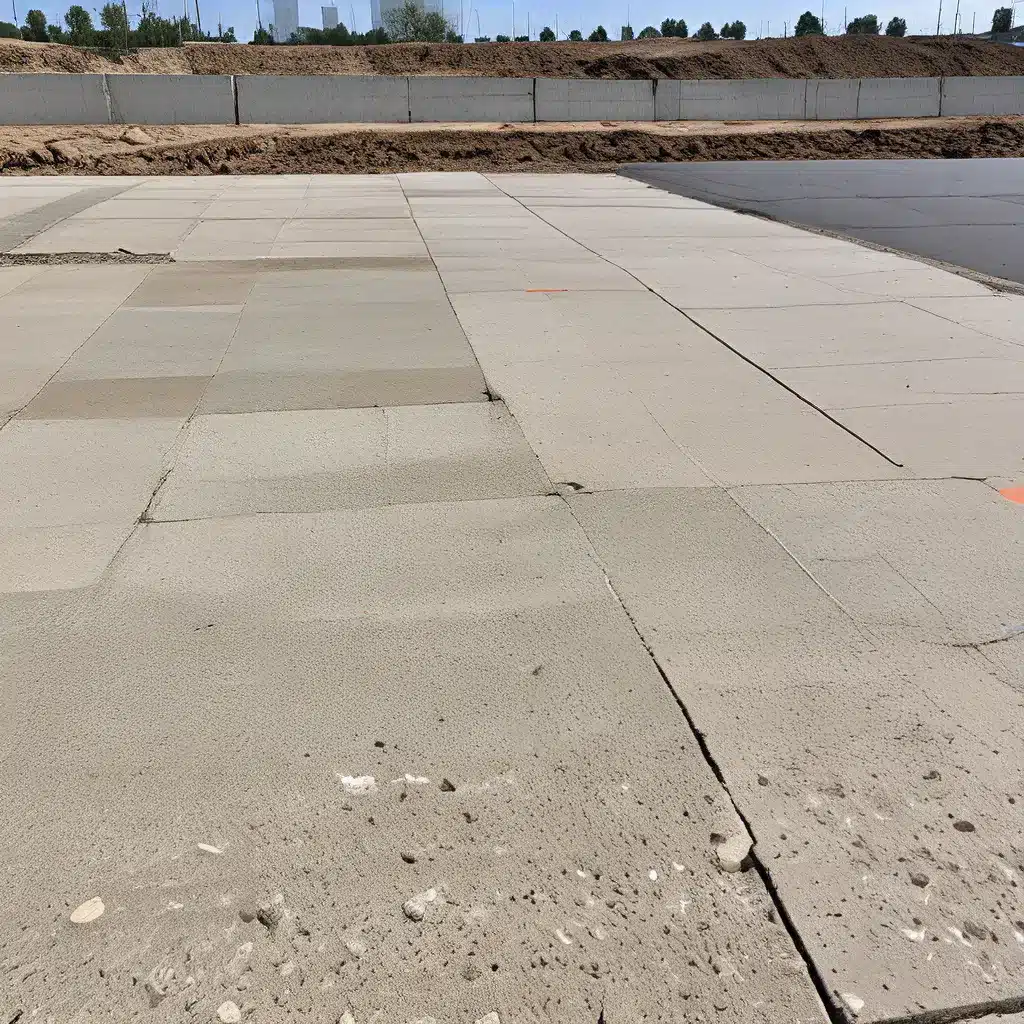
Concrete Awakening: From Gray to Green
Ah, the conundrum of concrete – that ubiquitous building material that has quite literally shaped our modern world. Yet, as our collective consciousness has shifted towards sustainability, this unassuming substance has found itself in the crosshairs of the environmental movement. You see, I used to view concrete as just another faceless ingredient in the construction game, but my perspective has undergone a remarkable transformation.
Allow me to take you on a journey – one that explores the evolving world of sustainable concrete and the exciting developments that are redefining the way we think about this essential material. Brace yourself, for this is no dry, technical treatise, but rather a lively exploration of the trials, tribulations, and triumphs that have come to define the “green construction” revolution.
Confronting the Concrete Conundrum
I still remember the day I first learned about the environmental impact of concrete production. It was like a punch in the gut – I had always taken this ubiquitous building material for granted, never really considering the outsized carbon footprint it leaves in its wake. But the facts are sobering: the cement industry alone is responsible for a staggering 8% of global CO2 emissions, a figure that has only continued to climb as our insatiable demand for concrete has skyrocketed.
As I delved deeper into the issue, I was confronted with a litany of concerning statistics. Did you know that the production of one ton of cement releases nearly a ton of CO2 into the atmosphere? And that the global construction industry consumes a whopping 40 billion tons of sand and gravel each year, contributing to the depletion of natural resources and the destruction of fragile ecosystems? The magnitude of the problem was truly overwhelming.
Seeking Sustainable Solutions
But just when the situation seemed bleak, a glimmer of hope emerged. Across the globe, a cadre of innovative researchers, engineers, and visionary companies have been hard at work, determined to reinvent the way we approach concrete and construction. They’re not content with merely tinkering at the margins – no, their sights are set on a complete overhaul of the industry, one that prioritizes sustainability, circularity, and environmental stewardship.
One such pioneering organization is Concrete RT Townsville, a local concrete services and solutions provider that has made waves with its commitment to green building practices. Their approach is multifaceted, spanning everything from the use of recycled aggregates and low-carbon cement alternatives to the implementation of advanced carbon capture and storage technologies.
But it’s not just about the nuts and bolts of concrete production – Concrete RT Townsville has also recognized the importance of shifting mindsets and engaging the broader community. Through educational outreach initiatives and collaborative partnerships with academia and industry, they’re working to inspire a new generation of construction professionals who see sustainability as an integral part of their craft.
Rewriting the Concrete Narrative
As I delved deeper into the world of sustainable concrete, I was struck by the sheer scale and complexity of the challenge. It’s not simply a matter of swapping out one material for another – it requires a fundamental rethinking of the entire construction ecosystem, from supply chains and manufacturing processes to project management and end-of-life considerations.
Yet, despite the daunting obstacles, I’ve been buoyed by the resilience and ingenuity of the individuals and organizations driving this revolution. Take, for instance, the work being done at the University of Minnesota’s Wilson Library, where researchers are exploring the use of alternative binders and advanced curing techniques to create concrete that is not only more environmentally friendly, but also more durable and versatile.
Or consider the pioneering efforts of tech giants like Infosys, which has set its sights on pushing the boundaries of net-zero construction. By integrating cutting-edge technologies like Internet of Things (IoT) sensors and building information modeling (BIM), they’re able to optimize energy usage, minimize waste, and ensure that their projects leave a minimal carbon footprint.
Concrete Redefined: The Dawn of a Greener Future
As I reflect on the progress that’s been made in the realm of sustainable concrete, I can’t help but feel a profound sense of optimism. This is no longer a niche concern, but a full-fledged movement that is gaining momentum with each passing day. And at the heart of it all are the visionaries and trailblazers who refuse to accept the status quo, who see the inherent potential in this ubiquitous building material and are determined to unlock it.
Sure, the path ahead is not without its challenges. As the UN’s Global Sustainable Development Report highlights, the construction industry is a complex, highly fragmented ecosystem that will require a multi-pronged, collaborative approach to truly transform. But with innovative minds, bold visions, and a steadfast commitment to sustainability, I’m confident that we can rewrite the narrative of concrete – from a source of environmental woe to a beacon of green construction.
And who knows, perhaps one day, as we gaze upon the gleaming, carbon-neutral structures of the future, we’ll look back on this era as the turning point – the moment when concrete evolved from an unassuming gray material to a shining symbol of our collective dedication to a more sustainable world. It’s a future that seems increasingly within reach, and I, for one, can’t wait to see it unfold.

